 |
相關閱讀 |
颜长江:这里的人有古风 这里的景有古意 ll 乡村骑士
 |
>>> 小城故事吳儂軟語溫婉人心的力量 >>> | 簡體 傳統 |
为观看与思想、生活与洞见构建通道
在全球化的今天,在消费主义的天下,老黄看似柔和的影像,在剑拔弩张的我这眼里,就是他妈的一记猛锤。它分明地宣告着:我们、这里、此时,还有一种另一种生活!资格老得多的生活!你爷爷你奶奶的生活!与土地与河流与山风天雨融合的生活,是更自然更人性的生活。
——颜长江
现实所呈现出来的东西比现实本身更吸引他,因此他能在一个表面上无趣的场景里看到拍摄有趣照片的机会。
——克劳迪·斯鲁本
大地之客
颜长江
苏家围是广东东江河谷的一片风景。它由以下部分组成:一条宽阔、缓慢、饱满的江水;一排连绵起伏左右伸展的柔和山峦;一袭沿江、沿溪挺拔的竹林。然后,在竹林边,有一个破落的小村子,止二三十间老房而已。这村子就是苏家围子。
每一样都有些特色,而每一样又不做到绝对。宽阔的,并不至于浩渺;柔和的,也还算不上妩媚。然后看那围子,还不如五里开外另一个有角楼、高墙的大垒。但它也能勉强提供一点人文:据说住的是苏东坡的后人。
然而这些平凡的组合,吸引了四方的客人。我也去过几次,也搞不懂自己为何前来,我毕竟见过太多极端的风物。现在一想,平凡的事物,只要各个因素略有可观,在这大地上自由结合、舒展,就是一幅好的风景,就如乡间的生活本身。苏家围,正如苏东坡,面孔、身材,不算上品,然而终以气质而胜――

图1 东源上莞 广东 2005

图2 连平内莞 广东 2008

图3 连平忠信 广东 2008

图4 东源苏家围 广东 2006
2006年4月30日,爱来苏家围的黄玉逵就在苏家围的破屋中,展示了他《初春的河源乡村之旅》影像,阴暗、潮湿,他似无所谓。我想他这是为了回报乡亲。我当时就觉得他与周围的风景有几分相似,这一种气质就是――
澹澹然。
或者简写的,淡淡然,雍容而平和、平淡的样子。
这好像不是“时代的风貌”,但却依旧属于他们――属于苏家围四散开去那广阔的客家山地,和数千万中国汉族优秀的一支――客家人。人如其族,亦如其地,黄先生和这片大地和四周乡里就这么自然,澹然。
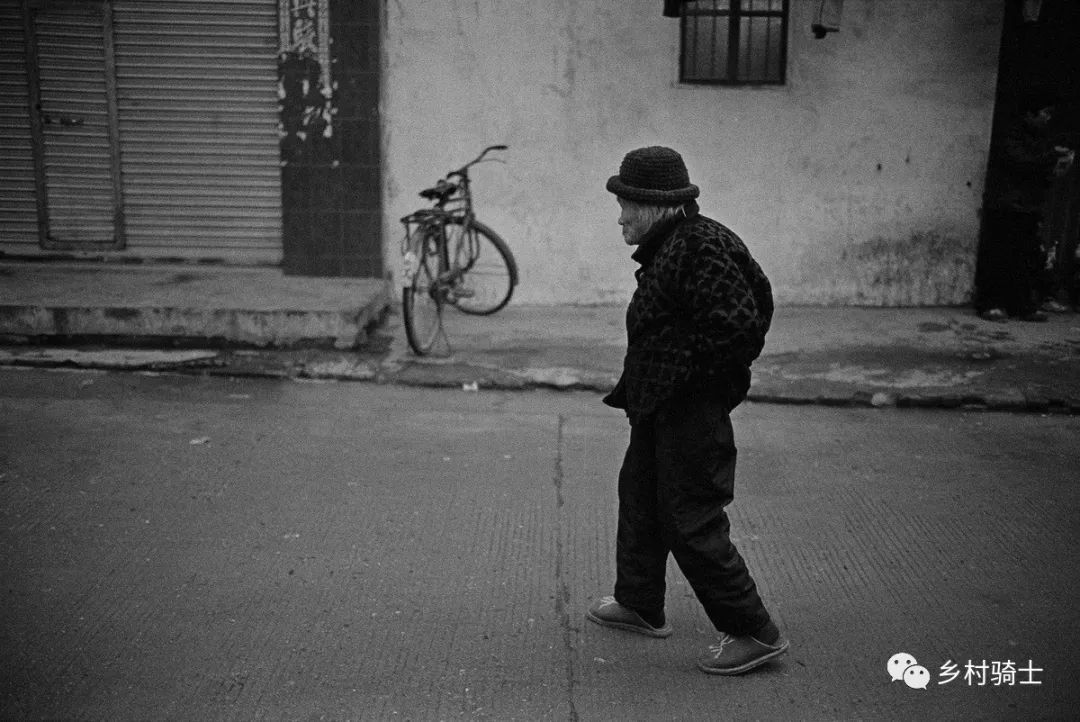
图5 连平忠信 广东 2007

图6 龙南杨村 江西 2006

图7 东源锡场 广东 2008

图8 东源苏家围 广东 2006

图9 绍兴安昌 浙江 2009
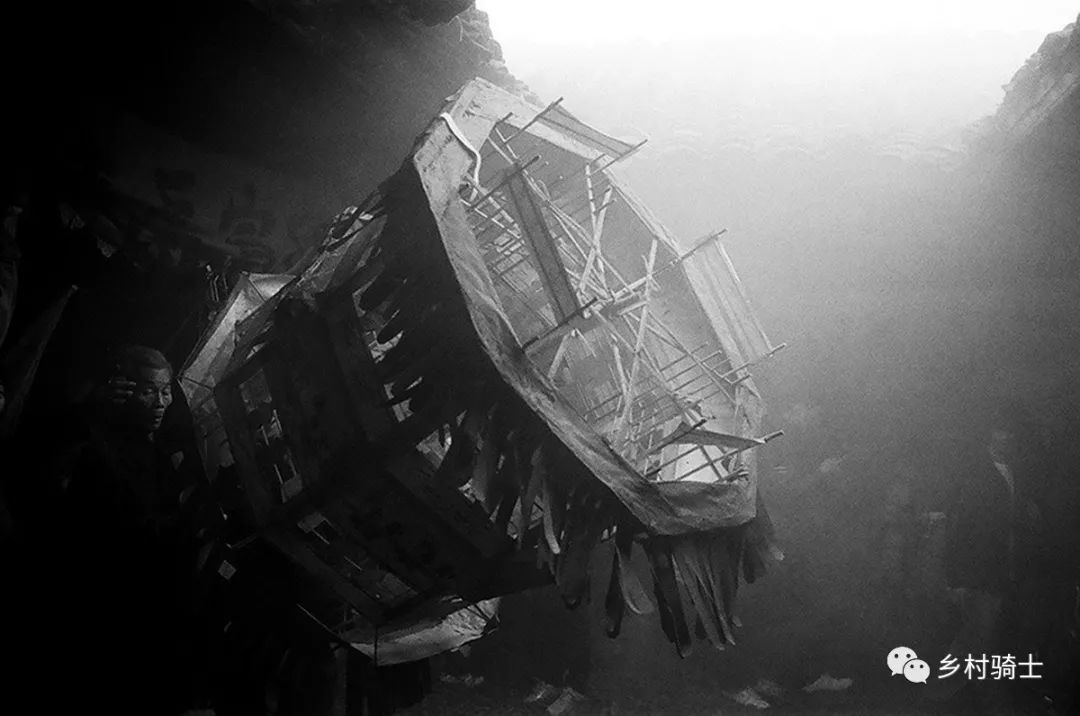
图10 东源上莞 广东 2009
其实我也是客家人,父籍广东梅县。但因在湖北生长,早已是楚地那种剑拔弩张的血性子。当然我熟悉客家,不夸张地说,在我见过的客家人中,无一位不平和。即便梅州或城里的人们,也有地处僻乡才有的憨直敦厚;而客家山村里的农夫,也不乏儒雅的书卷气味。这里的人有古风,这里的景有古意。
印象特别深的是,当年我读书读得人都迂腐如范进,在他处总有人笑话,而在梅州,人人却对我别有敬重。大家尊重读书人,而他们本身,无论士工农商,也比其他地方的人要稳重甚或迟缓,就像苏家围那湿润的河,和静默的山峦。他们总是在平常之中,温暖人心。

图11 内蒙古 2008

图12 东源康禾 2006
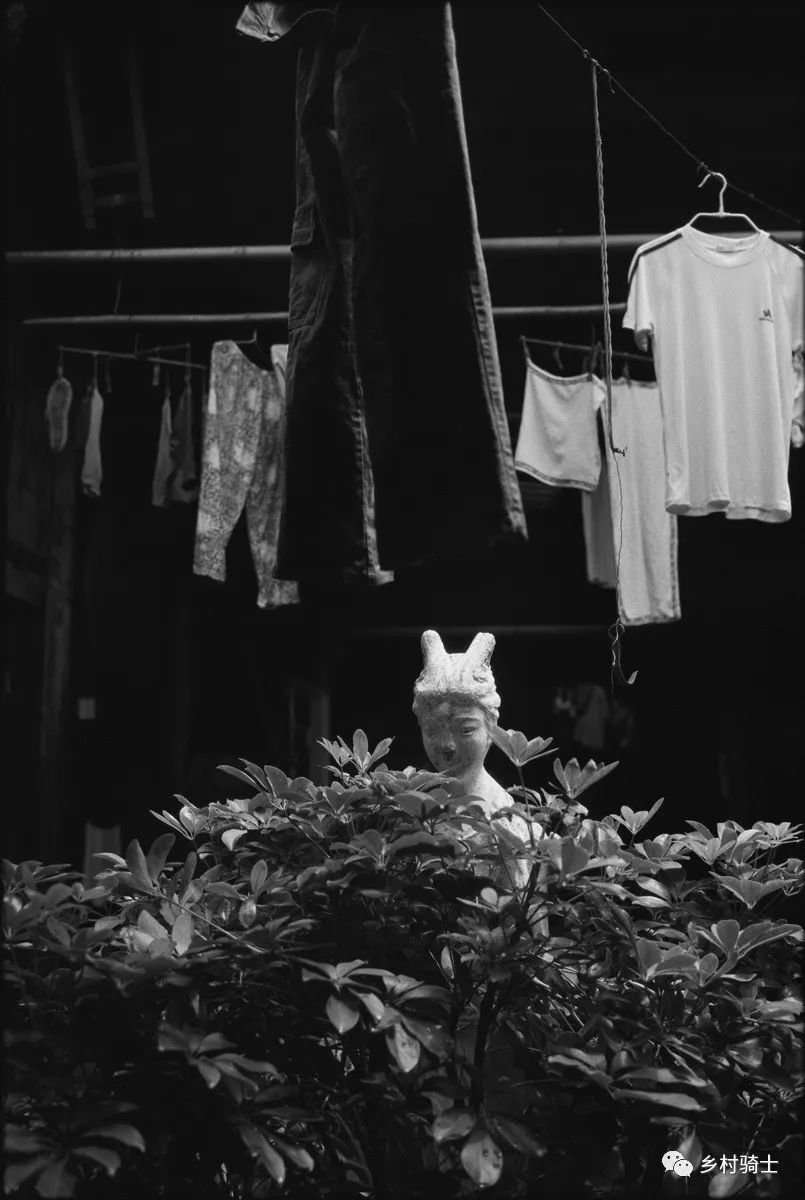
图13 赣州 江西 2007
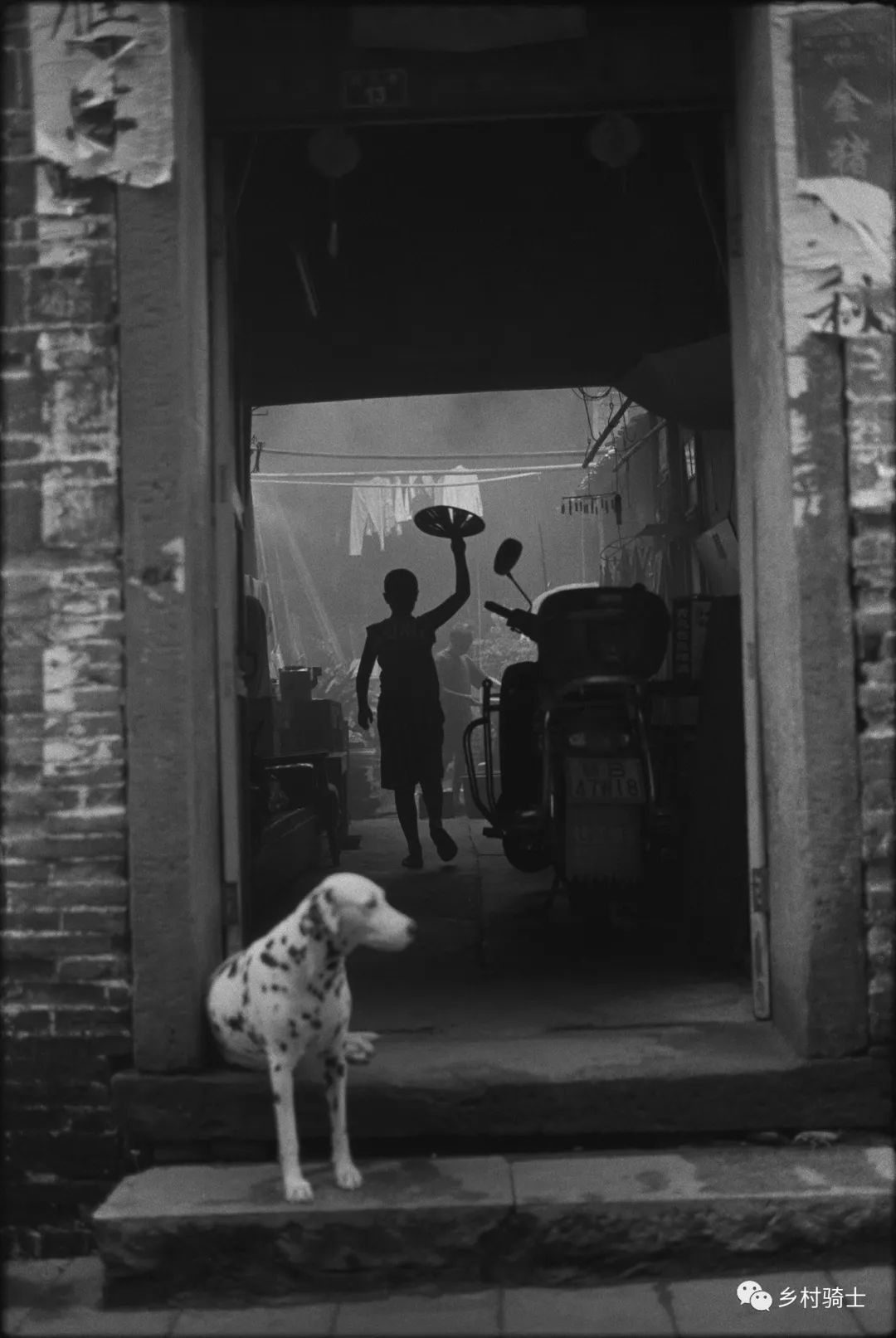
图14 赣州 江西 2007

图15 紫金 广东 2008

图16 连平元善 广东 2005

图17 河源 广东 2005
黄玉逵先生即如是。我初识他是1997年,他前来参加我们突发奇想办出来的“羊城晚报广东新闻版摄影颁奖会”。那天晚上,我和王宁德、罗焕灵等几位去沙漠吧,他也来了。大家似乎都喝多了几杯。我们敲着破鼓、酒杯声嘶力竭唱摇滚,标准的愤青,而老黄被调动情绪之后,也只是像天真的孩子一样,挥着双手“嗬嗬”地叫,一副阳光般快乐的笑脸,至今还在我脑海中晃动。当时,他都四十多岁的人了。平和的人到了一种极致,也莫过于斯。
往往是这种没“站在时代前列”(前列也是前线)的人,与乖戾骄纵的“时代气息”绝缘。他贵为一家地市报的总编、社长,也曾遨游西欧数国,也曾和克劳迪.斯鲁本等西方摄影名师交游,但他一直平静为人。这两年连州摄影大展,到处可见飞扬跋扈的摄影家、策展人或评论者,但他约见我们,都是主动来到我们下榻的地方,温和谦逊。江湖风雨之中,他真让我有如坐春风之叹。这才是人之为人,与智识相伴的乃是一种德行。顺便一说,我还有一位小兄弟,现在摄影界称之为“丘”的,也是来自平远县的客家人。他毕竟是新一代,也比老黄走得更远,到了广州前线居住,所以其影像也显示出复杂与激烈的内心。然而其人,竟也状若轻风,人瘦,声弱,都淡细若飘。老黄如树,小丘若竹,然而都澹澹然。此可见客家文化,化人无声也。

图18 紫金临江 广东 2005

图19 河源埔前 广东 2008

图20 河源老城 广东 2006
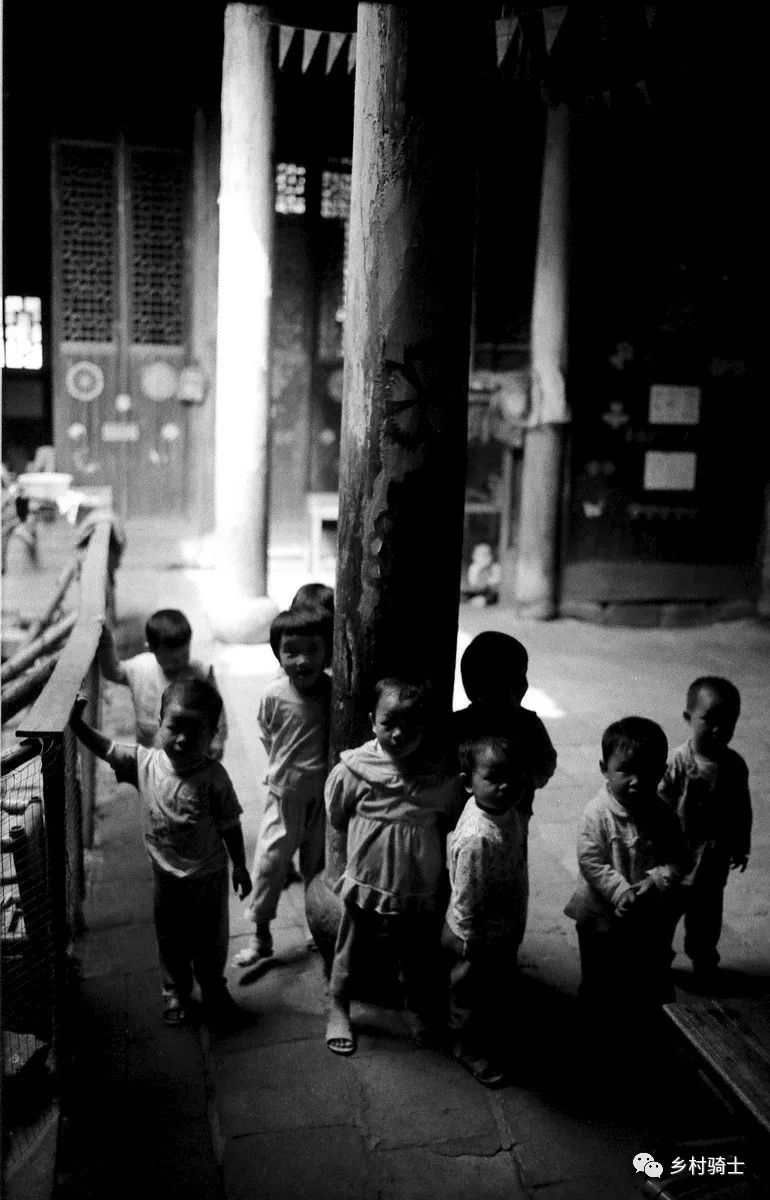
图21 赣县白鹭 江西 2008
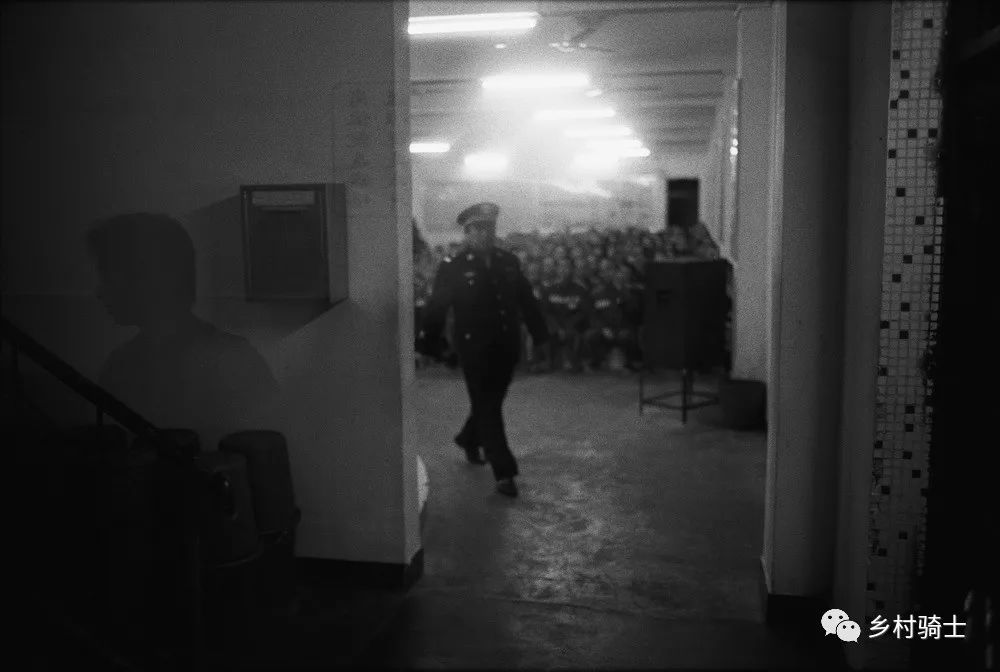
图22 连平 广东 2005

图23 河南 许昌-郸城小火车 2009

图24河南 许昌-郸城小火车 2009

图25河南 许昌-郸城小火车 2009
河之溯源——客家人是从魏晋开始南下,以士族身份以启山林,千百年来,在南方稻作,但仍继儒圣之绝学,而开一方之太平。说到魏晋,想起一个词:风度。客家人这种儒风与土地结合出的,也是一种风度。对于土地和世界,他们似乎永远保持着客人的身份,充满谦逊与敬畏。大地的客人――就是老黄的拍摄对象,是他与对象共有的身份,是他影像的气质之源,是他拥有的正确的摄影姿态――这种姿态,在莫名猖狂的中国摄影界是不多见的。多数人的功利掠夺,已使得我们在人民面前轰然倒地,失去了艺术教化的优越性,道德水准已在社会平均线之下。
说人,说地,还说了祖宗。说了这么多,关于作品还用多说吗?我向来以为,中国的摄影评论过于书面推演,而忽略摄影家的生活本身。最好的评论家应与其对象面对甚或共同工作、生活一段时间,知其人便知其文。写到这里,关于老黄的影像,也容易作评了:其摄影视角,既不俯看,亦不仰视;其摄影动力,源自喜爱,发为关切;其于对象,可入其中,若出其里;其作品气质,明净自然,一如其人。

图26 东源上莞 广东 2005

图27 东源上莞 广东 2006
其方法源流,亦不过同于近十多年来,中国纪实摄影界向西方借鉴而用。而老黄已基本做到了浑然而成,无迹可寻,自然而然。这里就不仅仅是个技术问题了。境界一出,水到渠成,方法就得心应手了。他的作品分宽幅和标准135两种,前者多平远明净之像,可能受了客家气质和中国画论以至德国哲思的影响,本身也反映出对中国田园诗意的尊重,我是最喜欢的;而另一类则不无空蒙苍茫,不仅反映对象,亦试图抒发内心,比如那旷地里的黑马,那局部迷乱的路树,我想一定有斯鲁本等西方摄影家的一些影响,也在第一类的基础上,显出一种更为宽阔幽远的可能性。
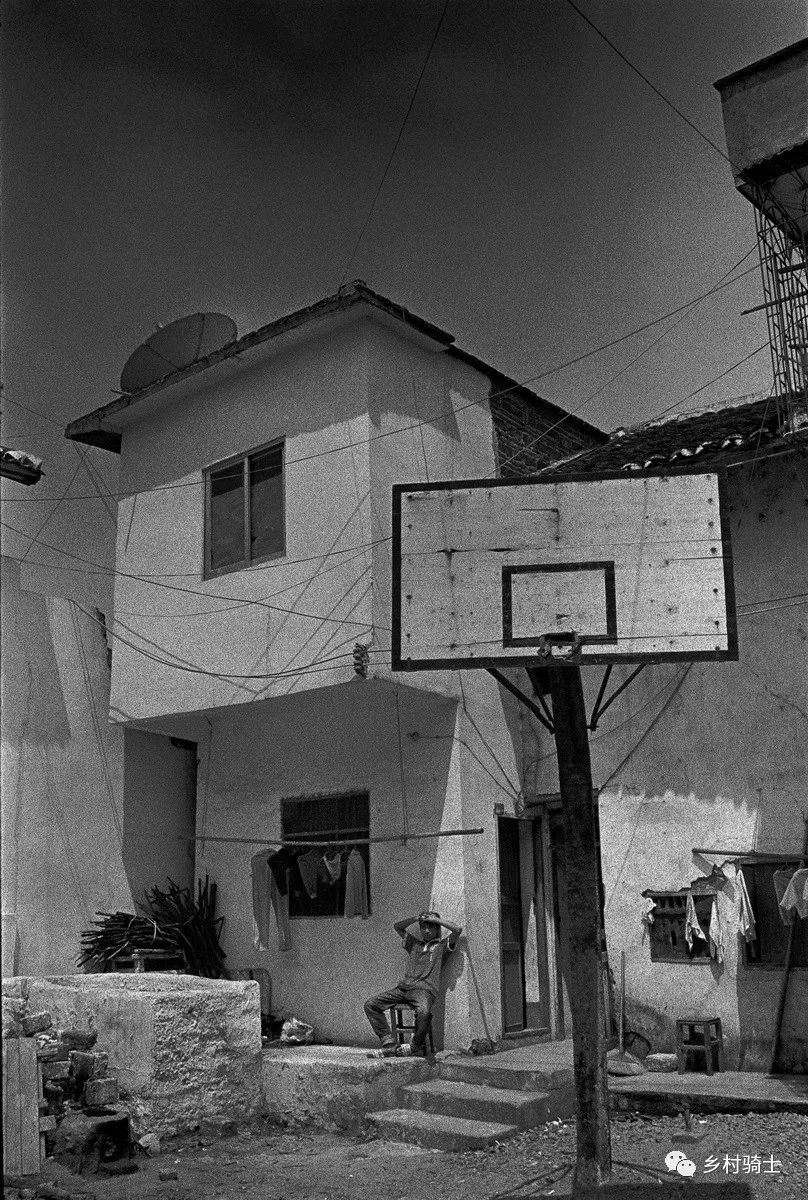
图28 和平彭寨 广东 2008

图29 紫金临江 广东 2006
这两种构成了关于乡村的丰富图景。其摄影的社会学评价是,在一种我们公认的表达水准(影像成熟,可成系列,比较全面)上,他填补了当代中国南方经典乡村生活的影像空白,而这是中国近一个千年的文化主源。也许我有些孤陋寡闻,我知道的,只有张祖道先生的《江村纪事》,那是几十年前,且偏于江南;晋永权的《傩》是借民俗以追文化,其意不在于生活之全面,其力迫本质则可供老黄借鉴。其他恕不再提。这样一搜罗,我想,中国纪实摄影的视野是偏狭的、失衡的。而老黄犹如一个心无旁骛的孤独的行者,就这样在一个“僻乡”默默捡拾着自己的日常生活,如陆元敏、安哥诸人,是为正途。这大地的客人,即是生活与历史的主人。

图30 和平林寨 广东 2008

图31 许昌县五女店镇 河南 2009
说来说去,求真与审美,最后与最初都归于一种善的情怀。在全球化的今天,在消费主义的天下,老黄看似柔和的影像,在剑拔弩张的我这眼里,就是他妈的一记猛锤。它分明地宣告着:我们、这里、此时,还有一种另一种生活!资格老得多的生活!你爷爷你奶奶的生活!与土地与河流与山风天雨融合的生活,是更自然更人性的生活。这种生活眨着古老的眼睛警告这个堕落世代:实迷途其未远,觉今是而昨非,既自以心为形役,不如归去来兮!更重要的是,归去的不只是乡村田园,那背后有古典文化的巨大魅影,如其幸而不灭,则又是未来救世之源。同所有的古典价值体系一样,它告诉你们:人其实可以诗意栖居于大地之上,同时拥有平静与尊严。斯为幸福!
苏家围,去河源东北三十里,在广梅高速路边。找到黄玉逵,吃饭不要钱。
本文为作者2008年8月6日为《大地之客》
画册所作的序言
颜长江,知名摄影家、摄影批评家、策展人
供职于羊城晚报
图片选自《大地之客》
《大地之客》(中英文版)于2009年8月
由岭南美术出版社出版
The Guests of theLand
Su Ka Wei is asight near the valley of Dongjiang River in Guangdong province. It is composed of thefollowing parts: a wide slow and abundant flow, a wavelike spreading gentlechain of mountains; and a tall and straight bamboo grove. By the bamboo grove,there lies a dilapidated village, which consists of only about 20 or 30 oldhouses. This village is called Su Ka Wei.
Each part ischaracteristic, and each part is different. The flow is wide, but not distant. Thechain of mountains is gentle, but not enchanting. When you see Su Ka Wei, you’llfind it is not so nice as the big base with turrets and high walls just 5 milesfar from here. However, there is a little human culture in it: it is said thatthere live the posterity of Su Dongpo.
Many visitors fromall over the province are attracted by the common combination. I have been herefor several times, but I don’t know why I came. After all, I’ve seen too manyextreme sights. Now I think, the common thing is also a beautiful picture onlyif all of its factors are worth seeing in some way, and are combining freely andspreading freely, which is like thecountry life itself. Su Ka Wei takes after Su Dongpo. His face and stature arenot the best, but he is famous for his temperament.
April the 30th2006, Huang Yukui, who had visited Su Ka Wei many many times, put on anexhibition of his pictures, named The Early Spring Travel to Heyuan Villages. Itwas cloudy and wet that day, but Huang paid no attention. I thought theexhibition was a way he redounded upon the Su Ka Wei villagers.
At the moment, Ifelt he’s just like the sights around him, and this is a kind of temperament:simple, natural and graceful, not seeking fame or wealth.
It seemed that suchan temperament was not the style and features in modern times, but it belongedto them------belonged to the Hakka mountainous region and Hakka people. Mr. Huang,the region, and people who live there are so natural and simple.
As a matter offact, I’m Hakka people, too. My father was born in Meixian, Guangdongprovince. But I grew up in Hubeiprovince, I became a man of impulse and a furious temper. I’m familiar withHakka people. I’ve never seen a Hakka person who is not simplehearted.. Even inMeizhou, the Hakka people are honest and sincere as them who live in remote andlonely mountainous regions. And the Hakka villagers are also cultured. Thepeople here keep their old customs, and the sights here have charm of antiquetaste. The most impressive is, I was often laughed at in that I was so pedanticat university like the character Fanjinin an old Chinese novel, while I got much respect from others in Meizhou city. Hakkapeople respect intellectuals. No matter what kind of jobs they are doing, itseems that they are steadier and sluggisher than the people in other places. Justlike the abundant flow and silent mountains, they are normal, but kindhearted.
Huang is as what Isaid. I met him for the first time in 1997. he came to attend the PhotographyAwarding Meeting for Guangdong News Editions of Yangcheng Evening Newspaper. Thatnight, photographer Wang Ningde, Luo Huanning and I went to a bar to have adrink, and Huang came with us. We knocked and struck the grasses, and sang rocksongs when we were a little drunk, like cynical youth. Huang was so happy thathe flung himself into our crazy game. His childish smiling face was stillclearly in my mind. He was over forty at that moment. And he was such a guy: simpleand easy to approach, to such an extent that maybe there’s no one beyond him.
Usually, such aguy who does not stand in front of times is always isolated from the moderntimes. Although he was ever a proprieter and chief editor of a newspaper inHeyuan city, and had traveled several countries in Europe,and had ever had close communication with the famous photographer KlavdijSluban, he always wants to lead a simple life. In the recent years’ Lianzhou InternationalPhoto Festivals where we could see all kind of arrogant and domineering photographers,curators and critics, Huang always personally arranged interviews with us onhis own initiative. He was so polite and modest. In this complicated society,Huang’s politeness and modesty are worth my admiration. He is a true person. Bythe way, I also knew a guy, named Qiu in the photographic circle, who came fromPingyuan, Guangdong.He is a new generation, he went farther than Huang, and lived in Guangzhou. His photosrepresent his complicated and impetuous minds. The guy himself is thin andlow-voiced. Huang is like a big tree, and Qiu a bamboo. They are all simple andnatural. The Hakka culture is running in their blood.
Hakka peoplemigrated from North China during the Wei andJin periods. Many of them are intellectuals and scholars, but after migrationthey had lived on farming for thousands of years. Inheriting the Confucianism,they lived in peace in the south. When referring to Wei and Jin periods, onword is often thought of: Grace, which was from the combination of the ideologyand land by Hakka people. It seems that they want to keep the identity of justguests to the land and the world, humbly and hornestly. The guests of the land,are what old Huang took photos of, are an identity he shared with hisphotographic objects, are the source of his spirit, and are also the rightattitude he took towards photography------this attitude, is seldom seen intoday’s Chinese photographic circle which is full of desires for materialwealth. Too many desires has beaten most of us, has made us lose thesuperiority of civilizing by arts. The social morality is under the averagelevel.
I’ve talked aboutHakka people, about the land, and also about Hakka’s ancestors, now let’stalked about the pictures in this book.
In my opinion,there are too many literal deductions in Chinese photographic criticism.Photographers’ own experiences are always being ignored. A best critic shouldbe the one who had ever worked or lived with his critical objects. He shouldknow the photographer well. Only then can he understand his pictures well. Whenspeaking of Huang’s pictures: he chose a point of view at which he neitherlooked up or looked down. He gained his photographic motivity from his truelove for photography, which leads to his cares about the people and the land. Heknows the people and the land so well that his pictures represent the spirit ofthem. His photographic pattern is natural and clean, just as the photographerhimself.
Huang studied thedocumentary photographic techniques of western countries. He studied so wellthat he had gone far beyond simple techniques, but mastered the spirit of themas if it was born with him. His pictures can be categorized as two types:Panorama and standard 135. The former are natural and clean, which wasinfluenced by Hakka spirit, traditional Chinese paintings and Germanphilosophy. They reflect Huang’s respect to Chinese idylls, which is also myfavorite. The latter are hazy and misty. Not only the things he photoed are so,but also they express Huang’s true mind. I believe, he was influenced too muchby western photographers, especially Kladij Sluban.
The two kinds ofpictures constitute the scene of country life in detailed, and fill theemptiness of Chinese current life style of Southern Countries. The life stylehas a bloodline of Chinese culture for on thousand years. Maybe I was a littleignorant, I knew only Documentary of Rivers and Villages photoed by Zhang Zudaohas a same theme. But that was several decades ago, and most pictures was aboutthe South of Changjiang River. Nuo by Jin Yangquan is exploring the culturalspirit through folk customs. It didn’t care too much about all the aspects oflife, but its exploration for the cultural spirits is worth being studied byHuang. I think, the view of Chinese Documentary photography is narrow and outof balance. Huang, such a lonely traveler, without distracting thought, isleading his common photographic daily life in remote mountainous area, the sameas Lu Yuanmin and An Ge. He is going the right way. This guest of the land, isthe master of life and history.
The motive and thepurpose of chasing nature and aesthetic judgment is a feeling of perfectness. Intoday’s globalization, in the world full of consumerism, Huang’s pictures arelike a god-damned big hammering on my head. They seemed to be telling: We,still have another way of living, Here, Now! It’s a way older than the other. It’sa way that belonged to your grandparents. It’s a way that melt with the land,the river, the mountains, the wind, the rain and the sky. It’s a way that ismore natural and humanizing. This way of living is warning the fallinggeneration: all the shackles came from one’s own mind, why not escape andreturn to reality. What you return to is not only the cottage idylls, but alsothe big phantom of classical culture. It will be the way of saving the world ifit does not die out. Like all the classical values, it tells us: we can livepoetically on the land, with great peace and dignity. And this is the realhappiness.
Su Ka Wei, aboutthirty miles northeast away from Heyuan city, near the Guangzhou-Meizhouexpress way. Whey you find Huang Yukui, he will pay for the meals.
Yan Changjiang
August 6th 2008
(The author is an artist,
photographer, andthe Chief Photo Director
of Yangcheng Evening News.)
英文翻译黄翊之
过去和现在——黄玉逵先生的人文情怀
克劳迪·斯鲁本
给我看看你的照片,我就会知道你是什么样的人。
这对于黄玉逵先生来说却要反过来。第一次遇见他的时候,他在说话之前总要思考很长时间,表达想法的时候言简意赅,令听者反思良久。他的话语带有一种源自个人坚定信念的含义。
我们第一次见面缘于我2006年在广东美术馆的展览。他后来邀请我去到他的家乡,在那里我们一起拍了一系列照片。他是如此地热情好客,当时我们约定他日再会。此后的第二年,在巴黎,我们再次见面,他和两个儿子当时正在游览欧洲。不知道法国式的招待能否和广东人有名的友善相比,但我敢拍胸脯说,我们五个人一起度过了一段美妙的时光,其中雷梦君(华裔法籍画家——编者注)也和我们一起游览了没有繁忙交通和匆匆人流的仲夏巴黎。
也就是那个时候,黄玉逵先生才正式向我展示他的照片。当我作客广东时,他并不想带着他自己的作品,以免留下毛遂自荐的印象。这表现出他态度的稳重和周详。

图32 龙南杨村 江西 2006
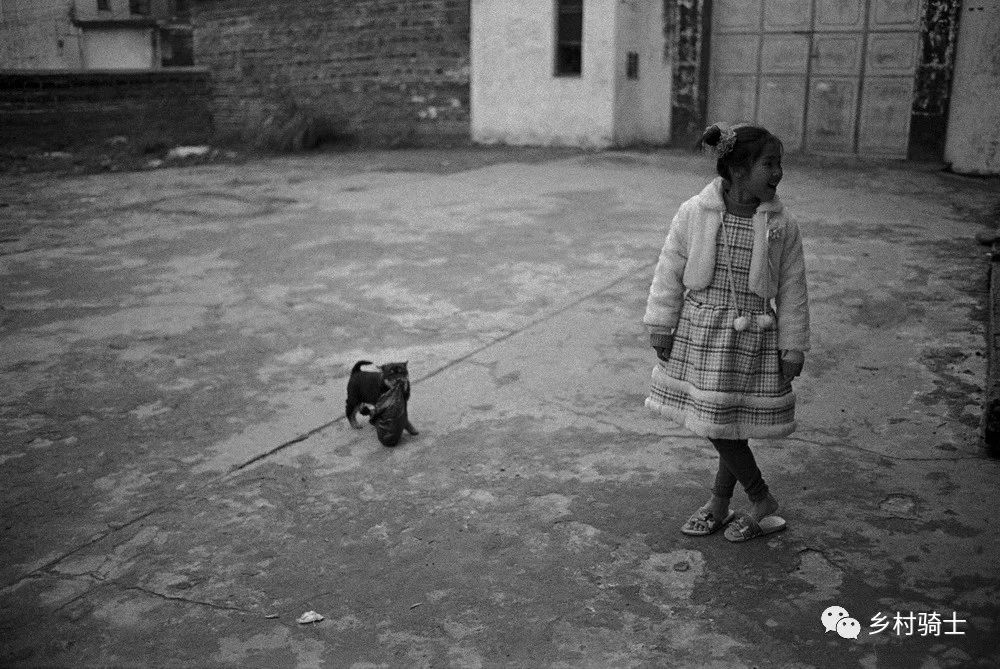
图33 连平忠信 广东 2007

图34 连平元善 广东 2005

图35 紫金中坝 广东 2006
不过我在广东看到过他工作的样子:专注、迅速、安静。他脖子上挂着徕卡和哈苏X-pan,时时努力去捕捉一个场面的精髓而不是事件的浮光掠影。在坐小船渡河的时候,有意思的是,所有坐船的人——其中有许多影友——看着船的一边,而黄玉逵先生却完全一个人在拍摄只对他有意义的东西。
现实所呈现出来的东西比现实本身更吸引他。因此他能在一个表面上无趣的场景里看到拍摄有趣照片的机会。现在我眼前有相当多他的摄影作品,我敢说我马上能从这些作品中看到他的品质。他始终保持着距离,不是因为他没有融入场景,而是因为他知道,小声说话更容易让人听见。在适当的距离可以更好抓住场面的核心。同时他对别人的尊重令他可以靠近别人,却又不干扰别人正在做的事情。被摄者已经觉察到他——他的体格即使按照西方标准都算得上高大,但是他内在的安静却让别人继续做自己的事情。
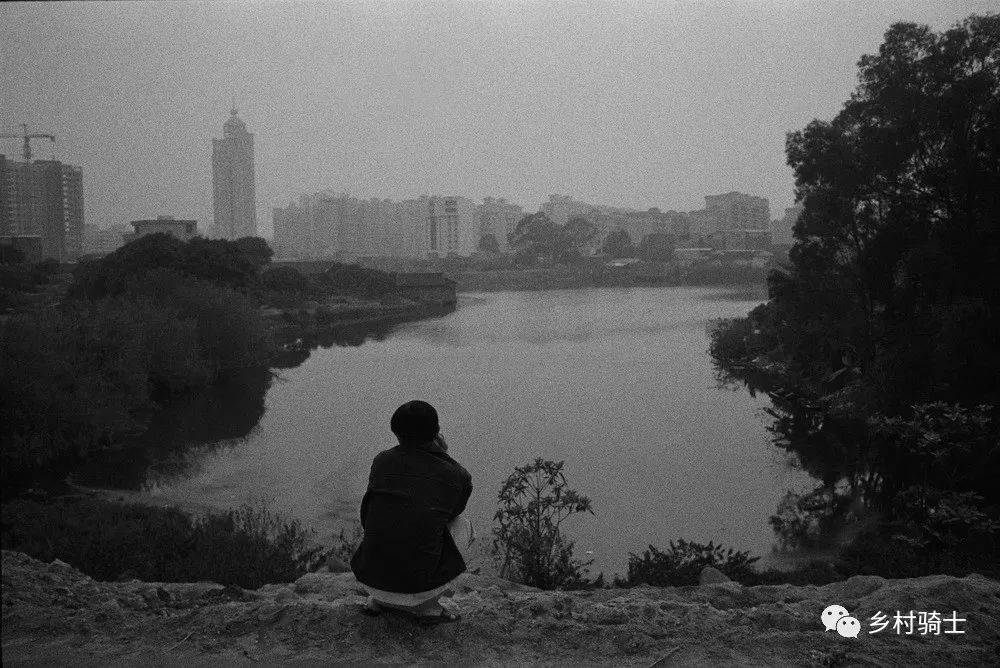
图37 河源 广东 2008
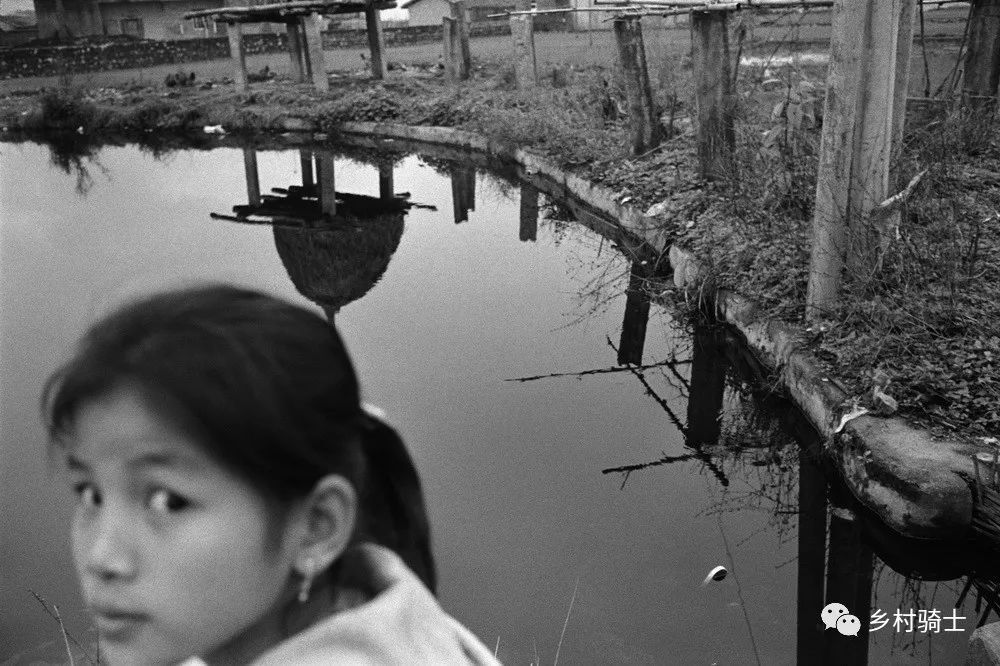
图38 紫金柏埔 广东 2006
我觉得,摄影师希望不被人看见,这从一开始就是个误区。对我来说,让被摄者看见并且接受更加重要,哪怕他们会表现得刻意。摄影师的态度应该建立起他对被摄者的信任。验证此事的最好方法就是看小孩和狗的态度。对,狗也在内。因为小孩和狗在被教化之前只是依靠直觉。他们的反应是摄影师的一面镜子。图32就是很好的说明。孩子们已经看到了摄影师,但还是沉浸在自己的世界里。他们的面部带有点紧张和疑问。照片的中央没有内容,所有张力都在侧边,在右边的这只手才是照片的真正中心。它自身就可以构成一幅画面。图33是另一个例子,里面的的孩子和狗发挥了完美的作用。院子里的硕大空间因为摄影师和主体之间的距离显得如同一个舞台。小女孩和小狗都很可爱,但观众的注意力却被小女孩交叉的双腿所吸引,这一元素顿时赋予了照片超现实色彩。图34既惊人又动人:老人身在屋里,手却在抚摸屋外的狗,狗用后腿站立,像个小孩。在黄玉逵先生的照片(是否在中国拍摄?)里,就连马也用带子拴起来变成了狗(图35)。动物的四条腿和金属结构之间组成一个极好的构图范例,这将我们带到了黄玉逵摄影的另一个重点:他的构图感。构思与构图可以理论地去学习,但是要表现它们则需要通过纪实摄影,这意味着,一旦在某一场景的现场,摄影师必须使自己有一种平衡的观念,只有建立了这种观念才不会令到摄影的构思变成单纯的学院理论截面的反映,而是一个所有事物都在其恰当位置而无需明白其所以然的场景。要达到这一境界需要个人的修养以及十分明确自己的拍摄主题。我们可以确定地说,黄玉逵先生深谙摄影大师们的风格,不仅如此,他亦深谙只用最少工具作图的古典油画大师们的风格。
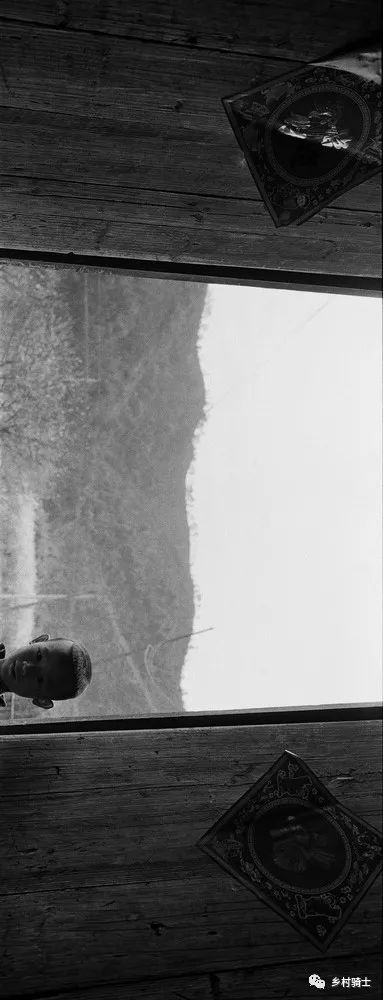
图39 紫金 广东 2005
图37展示了摄影者丰富的知识背景,这种背景令他有足够余地去表达一种充满诗意和质疑的态度。照片背景中的城市也可看作对前景中蹲着的人思想深处的威胁。人和平静的湖水意味着过去,而背景中的城市则是对我们未来的质疑。和谐感在肖像照中尤其明显,自然元素总是在这里作为背景出现,同时也是令构图变得紧凑的技术手段。图38是其中一张,摄影者本可以对焦在实际的氛围而不是倒映的构筑物上。相反,正是少女脸上的清纯照亮了照片的其余部分。把她放在画面的左下角,可以空出余地去表现池塘边缘肉欲的弧线,从而营造出包括屋顶剪影(中国南方乡村中的稻草棚――译者注)在内的不同元素之间的和谐。另一张同类的照片是图39,虽然主体非常不同。男孩头部打破了本来完全对称构图的单调。这张照片再一次证明,我们所面对的这位摄影者只展示他觉得带有某种含义、结构和感觉的照片。

图40 连平 广东 2005

图41 连平忠信 广东 2005
陀思妥耶夫斯基对所有角色都进行了正面描写。不鄙视,没有肤浅的评判。我们可以说黄玉逵先生以一种宽宏和同情的方式去看待照片里的人物。这种同情在有力的画面里没有变成一种感伤。即使是身穿条纹服的囚犯(图40),其脸上的表情也暗示着观众:在作为囚犯之前,他们首先是人。黄玉逵先生从来不把人当作一种技术手段来慰籍艺术上纯精神需求。他关注的不止是人,还有摄影,所以他必须要找到两者之间融合和互相促进的恰当平衡点。
他的大部分照片都涉及到人,虽然其中一些没有任何人物出现,但并不显得空白。图41看起来像三种不同元素的拼接。对我而言这是其中最有诗意的一张照片,这张杰作讲述了一个人内心的个性,因为它反映了摄影者的灵魂。从图面上它看起来像三张照片拼在一起,很多人可能会对此视若不见地从旁边经过。这正是“文学式摄影”的开始:摄影者将没有明显特点的场景变成一张杰作。图42里激动人心的风光是黄玉逵先生作品的一次转向。它运用了风光摄影的传统角度拍摄典型的中国风景,但是奇特的用光令其再次成为摄影者内心感受的一面镜子:忧郁和美好。
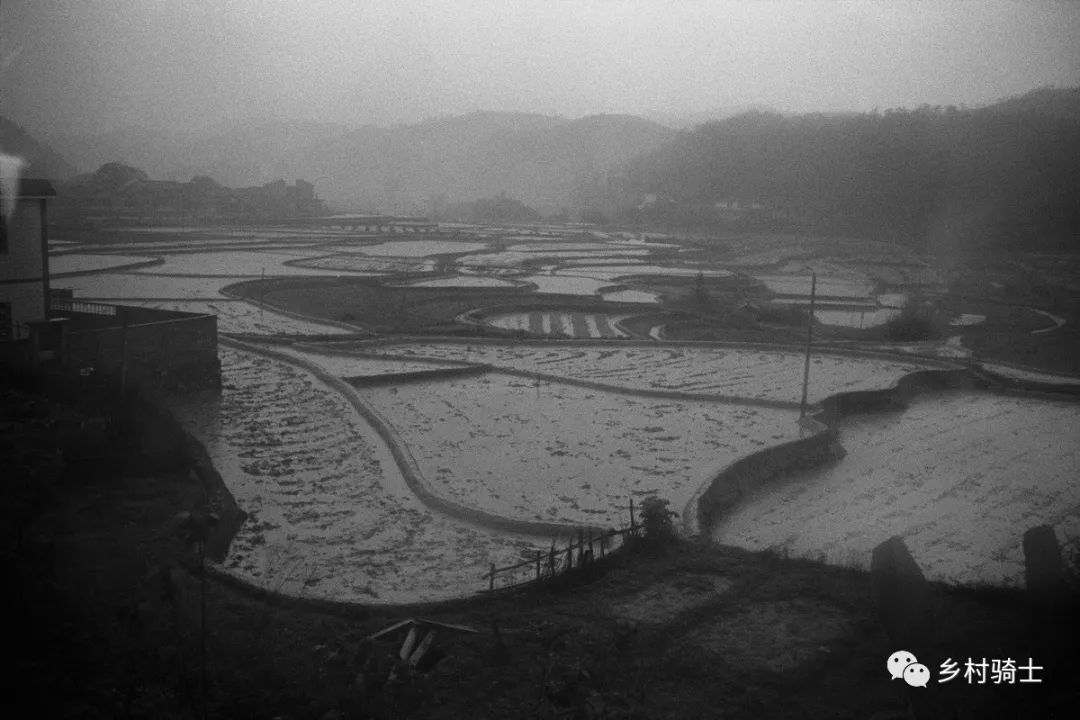
图42 和平 广东 2006
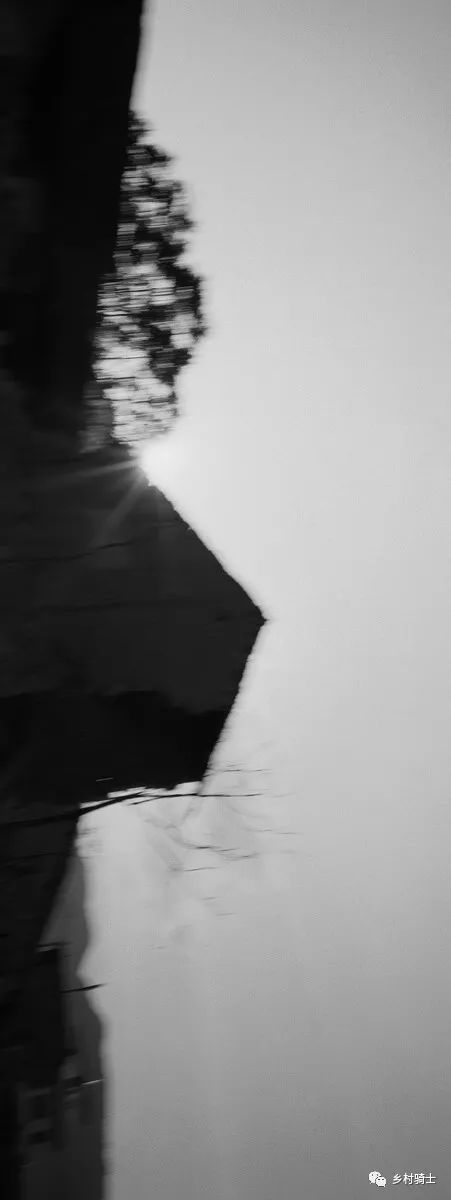
图43 连平忠信 广东 2005

图44 和平热水 广东 2006

图45 秦皇岛 河北 2008

图46 东源曾田 广东 2008
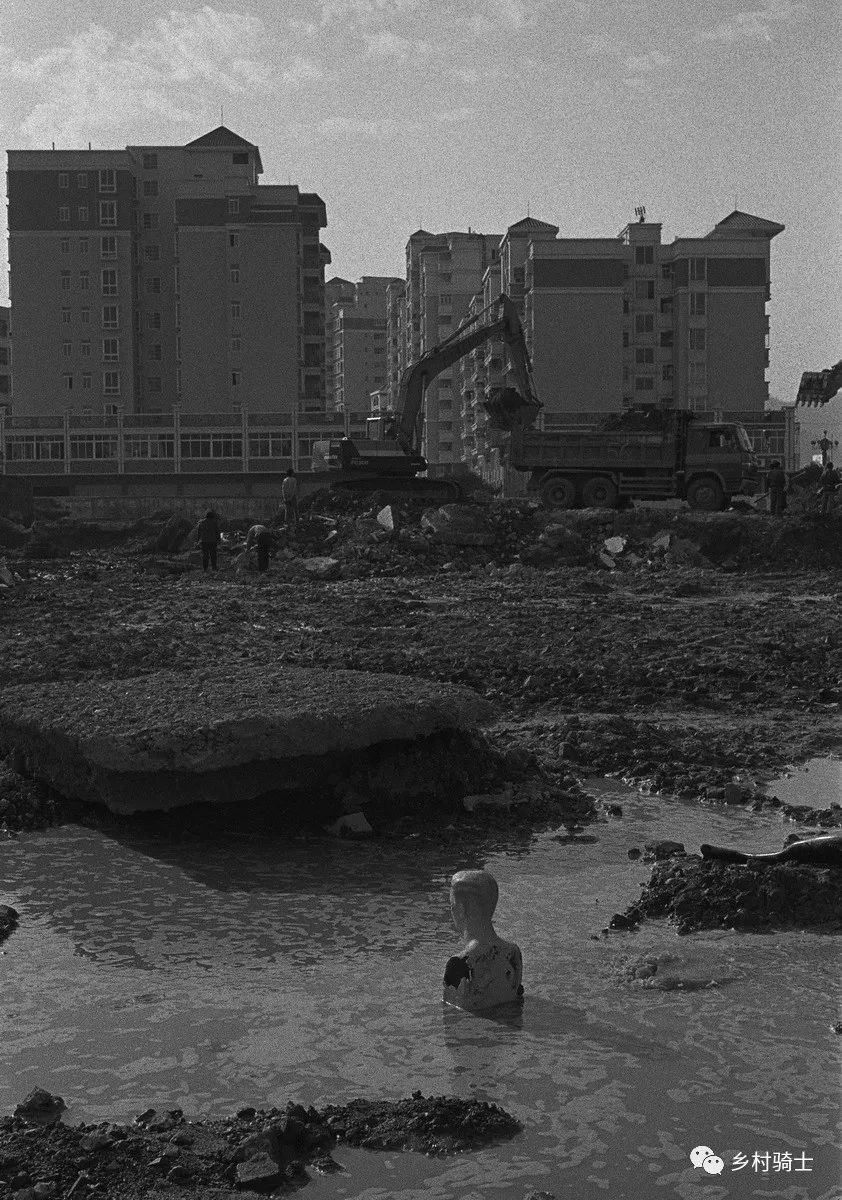
图47 河源 广东 2006
我最后才提及这张转向性的照片,是因为这类照片将对摄影的质疑推到了最大程度。意图已经不能再被描述、游说或者证明。意图从观众角度激发出强烈感受。图43、44、45、16和图47触及了观众的灵魂。这些照片在未经训练的眼睛里差不多可以看作是败笔。然而它们却展示了黄玉逵先生良好的现代摄影意识,他感觉在这个领域里可以找到空间去表达他宽大、诗意、勇敢和野性的一面。
2008年秋于巴黎
本文系作者为《大地之客》所写的序言
作者为当代法国着名摄影艺术家
原文为英文, 中文翻译:黄云涛
图片选自《大地之客》
Time past and time present
Mr.HUANG’s humanity
Klavdij Sluban
Show me your photos and I will tell you who you are.
With Mr. Huang, it was the opposite. I first met the man.Seeing the way he was thinking long before talking, then expressing histhoughts in a concise yet concentrated way gave to the listener material tothink on for a long time. His words have a meaning and the meaning comesfrom a personal and deep conviction.
We first met on the occasion of my exhibition at the Guandong Art Museum in 2006. Then Mr.Huanginvited me to his homeplace where we made a series of photos together. Thehospitality and the warmth of the welcoming was such that we promised to meetagain. It happened the next year in Paris, asMr.Huang and his two sons were visiting Europe.I do not know if French hospitality can compete with Guandong famous kindnessof its people but what I can say for sure, we spent a wonderful time the fiveof us, Diana Lui joining us in our mid summer visiting of Paris without its usual traffic and Parisiansin a hurry.
It was only on this occasion that Mr.Huang showed me someof his photos for real. While I was his guest in Guandong, he did notwant to come up with his own work and give the impression of pushing himselfforward. This was so telling of Mr.Huang’s attitude of respect and discretion.
But in Guandong I had seen him at work. Concentrated,quick, silent. His Leica and his panoramic Hasselblad around his neck, onceagain he was more concentrated on trying to catch the essence of a situationrather than the anecdotic aspect of the event. While crossing a river on alittle boat, it was interesting to see all the passengers, among them manyphotographers, looking on one side of the boat, while Mr.Huang was totallyalone, photographing something that made sense only for him.
He was attracted to the representation of reality morethan to reality itself. For this reason he could see in an apparentlynon-interesting event the possibility of an interesting photo.
Now that I have quite a few photos of his under my eyes,I can tell I recognize immediately the qualities of the man in his work. A manwho remains at a distance not because he is not involved but because he knowsthat to be heard it is more efficient to speak low. To catch the core of asituation, the appropriate distance gives the tone. Yet his respect to peopleallows him to approach them without disturbing the course of their work. Theyhave noticed him, how not to notice a man who is considered as tall even forWestern standards, but his inner quietness allows people to keep on thoughaware of this foreign presence.
I think the photographer who whishes to be invisiblemakes a wrong starting point. To me it is much more important to be visible butacknowledged by the people photographed as an outside presence who iswell-intended. The photographer’s attitude should create this confidence in thepeople they photograph. The best way to check it is to analyze children’s anddogs’ attitude. Yes, dogs’ too. Because children and dogs are intuitivebefore being civilized. Their reaction functions as a mirror of thephotographer. Photo F.32 is so telling. Children have noticed the photographerbut they remain in their children’s world. Their faces are tight andquestioning. The centre of the photo is empty but all the tension is on theside. This hand on the right is the real centre of the photo. It could havebeen a picture in itself. F33 is another example where both child and dogplay their role to perfection. The huge space of the courtyard is used like astage thanks to the distance the photographer keeps with his subject; both thelittle girl and the little dog are cute, but thanks to the composition thespectator is drawn to the little girl’s crossed legs that suddenly appear likea surreal element. F34 is as touching as surprising: the hand of the oldperson already in the house is caressing the dog outside, standing on hindlegs, like a child. Even horses are turned in dogs in Mr.Huang’s photos (or isit in China ?)by the way they are put on a leash (photo F35. thestunning example of composition between the animal four legs and the metallicstructure brings us to the other main point in Mr.Huang’s photography: hissense of composition.
Structure and composition can be learnt theoretically butto express them throughout documentary photography, that is to say on the spotof an action, one has to have oneself this notion of balance that will givestructure not an academic profile but a sense of ‘everything at its right placewithout knowing why’. This requires personal training as well as aperfect knowledge of one’s subject. We can definitely tell Mr.Huang knows hismasters in photography but also much more than that: classical painting whereall must be said the minimum of devices.
Photo 37 is a perfect illustration of thephotographer’s rich intellectual background that gives space to express anattitude full of poetry and also questioning. This city in the background couldalso be considered as a threat to the deep thoughts of the person squatting inthe fore-ground. The person and the quietness of the lake are a reference tothe past, the city in the background is a questioning of our future. This senseof harmony is particularly present in portraits that are always consideredwithin their natural surrounding integrated as part of a technical deviceto reinforce the tightness of the inner composition. F38. is one of thephotos where the photographer could have focused on the actual atmosphere ofthe rather run-down architecture. Instead, it is the purity of the young lady’sface that enlightens the rest of the photo. Framing her in the left cornerbelow, it gives space to develop the sensual curve of the rim of the pond andcreate thus a harmony between the various elements, reflection in the stillwater of the hatched roof included. The other picture of the same kind thoughvery different by its subject is F39. A perfectly symmetrical compositionof the elements with the boy’s head to break the monotony of a too expectedcomposition if he had been in the centre. Once again, this photo is the veryproof that we are dealing with a photographer who shows only the photos heknows they are carrying a meaning, a structure and a feeling.
All of Dostoyevsky’s characters are depicted in apositive way. No meanness. No superficial judgment. We can say all ofMr.Huang’s people in his photos are seen with a generous and humanapproach. This humanity never turns into pathos because it is given a solidframe. Even the prisoner imprisoned among thousands of stripes and backs has alook that has the effect of a reminder on the spectator: before being prisonersthese people are human. Mr.Huang never uses people as technical devices tocomfort a purely mental approach to his art. Human being is his main concernbut photography is his main concern as well. Therefore he must find the rightbalance where they both meet and enhance each other.
Most of Mr.Huang’s photos deal with human beings though afew are without anybody but not empty. F41. looks like a collage of threedifferent elements. To me one of the most poetic of his photos, this is thekind of masterpiece that speaks of a man’s inner personality. Because this isthe projection of the photographer’s soul. Graphically it seems there are threephotos put together. Many people would walk by without noticing anything. Thisis where “author photography” starts: the photographer turns an anonymous eventinto a masterpiece. The breathtaking landscape F42 is the transitional photoin Mr.Huang’s body of work. It feeds on all the traditional approach oflandscape portraying as well as of the typically Chinese scenery, but thepeculiar light makes it once again a mirror of the photographer’s innerfeeling. Melancholy and beauty.
Transition to the series of photos I keep for the endbecause they are those that push the questioning on photography to the furthestlevel. The purpose is no longer to depict, to convince or to prove. The purposeis to arise a strong feeling in the spectator’s approach. Photos F43,F44, F45, F46 and F47 reach the spectator’s soul. They are photosthat could have been considered almost as failures by the untrained eye. Yetthey show that Mr.Huang is perfectly aware of modern photography and feels itis a domain where there is room to express his generosity, his poetry as wellas his daring and wild part of himself.
Paris, autumn 2008
Klavdij Sluban is a contemporary
famous Frenchphotographer and artist .
2023-11-10 16:48:11
評論集
暫無評論。
稱謂:
内容:
返回列表

